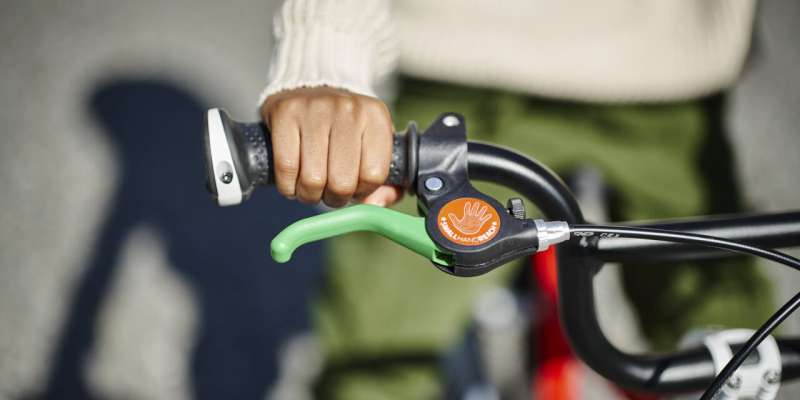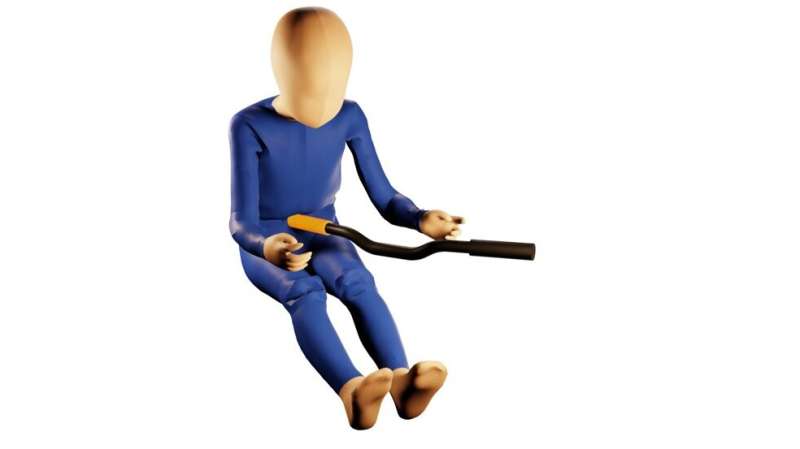This article has been reviewed according to Science X's editorial process and policies. Editors have highlighted the following attributes while ensuring the content's credibility:
fact-checked
trusted source
proofread
Bicycle handlebars as a risk of injury

In Austria, around 8,000 children and young people are injured in cycling accidents every year and subsequently treated in hospital. Around 600 of the injuries are directly attributable to contact with the handlebars, and around 19 percent of these require hospitalization. It is striking that around half of the injuries caused by the handlebars affect the abdomen.
Specifically, they are injuries (e.g. bruises, tears) to the liver, pancreas or spleen, explains Christoph Arneitz, senior physician at the Department of Pediatric and Adolescent Surgery in Klagenfurt, who medically analyses such accidents.
Abdominal injuries typically occur when a child falls onto the end of the handlebars of a bicycle lying on its side on the ground or in rear-end collisions when the handlebars suddenly turn after a collision.
Simulations with six handlebar ends
Maximilian Schinagl investigated these accident situations for his Master's thesis at the Institute of Vehicle Safety at Graz University of Technology (TU Graz). Using a virtual human body model of a child, he simulated the consequences of a blunt impact to the abdomen from various angles. For his simulations, six handlebar ends from different manufacturers and a defective handlebar end (without a protective cap) were used as a base value.
As Schinagl shows on the basis of the simulation-based study, the design of the handlebar ends has a significant influence on whether children are injured in bicycle accidents and how serious these injuries are. Injury criteria such as contact force, penetration depth, loads on the abdominal wall and organs were analyzed. Handlebar ends with widened protective caps showed the best protective effect.,

Still plenty of research potential
A follow-up project is currently underway at TU Graz in cooperation with the Austrian children's bicycle manufacturer Woom, in which the influence of the handlebar ends on abdominal injuries is being analyzed in detail.
"In the course of our simulations, we have seen that handlebar ends with a larger diameter can reduce the risk of injury by up to 20 percent," explains Nico Erlinger from the Institute of Vehicle Safety at TU Graz, who is involved in the project. "As there have only been a few studies on injuries in this type of accident so far, there is still a lot of potential to reduce the risk with further research."
Although Woom already uses handlebar ends with widened protective caps that significantly reduce the risk of injury, this project aims to increase the safety of handlebar ends even further.
A publication resulting from the project was presented last September at the conference of the International Research Council on the Biomechanics of Injury (IRCOBI) in Cambridge, UK. "Cycling safety is our top priority," says Woom CEO Paul Fattinger: "By working together with research institutions, we can optimize the design of bicycle components on the basis of empirical evidence."
More information: Report: www.ircobi.org/wordpress/downl … 3/pdf-files/2324.pdf



















